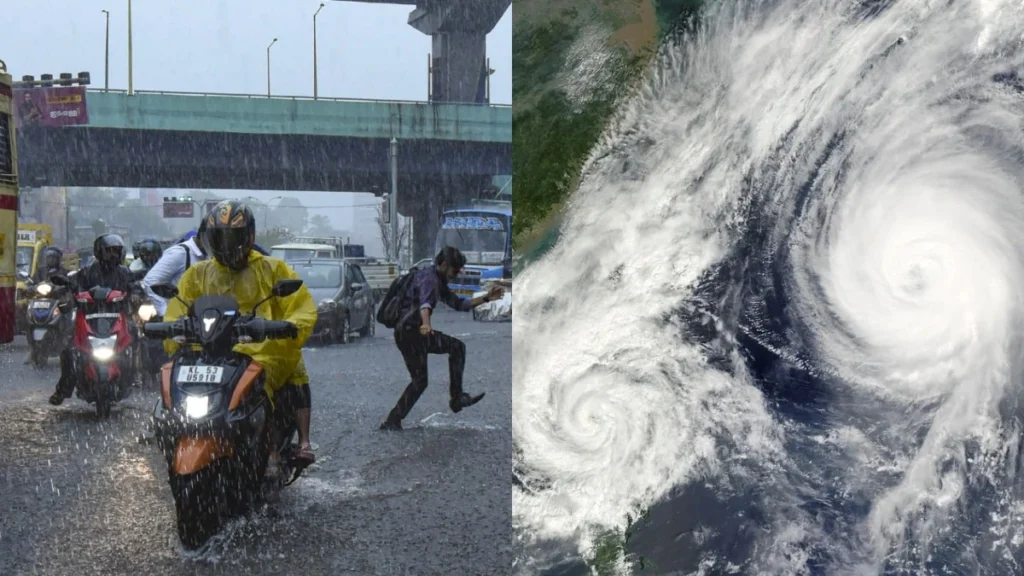Dana Cyclone under 200 train Cancelled
flights suspended; Landfall in Odisha, West Bengal to commence tonight; evacuation underway
Cyclone Dana is expected to make landfall in Odisha and south Bengal tomorrow, bringing heavy rain and strong winds. Baja Kalamata Ghats approaches the
Cyclone Dana is now fast approaching.
It is expected to make landfall in coastal areas of Odisha early on Friday, bringing rain and thunderstorms.
The plan said that by Wednesday evening, only 30% of the people, or about 30,000 to 400,000 people living in “danger zones”, had been evacuated. By Thursday morning, only 30% of the people, or about 30,000 to 400,000 people, living in “danger zones”, had been evacuated. Meanwhile, the India Meteorological Department (IMD) said that Cyclone Dana will hit the Bhitakarnika National Park area and Dharma port early on Friday. However, the landing will begin on the evening of October 24. “From the night of October 24 to the morning of October 25,” it added.

As Cyclone Dana approaches the coasts of Odisha and West Bengal, authorities are in full swing, implementing evacuation measures and preparing for the storm’s landfall expected tonight. This live update details the ongoing situation, emphasizing the latest developments in evacuation efforts, safety protocols, and the potential impact of the cyclone on the affected regions.
Current Status of Cyclone Dana
As of this evening, Cyclone Dana has intensified significantly, with maximum sustained winds reported at approximately 100-120 km/h (62-75 mph). The Indian Meteorological Department (IMD) has confirmed that the storm is currently tracking north-north-westward and is expected to make landfall between Odisha and West Bengal later tonight.
Evacuation Efforts in Odisha
1. Government Response The Odisha government has taken proactive steps to ensure the safety of its residents. districts such as Bal sore, Bhadra, and Jagatsinghpur. Authorities have identified high-risk areas and are facilitating the movement of residents to designated relief camps.
2. Local officials are going door-to-door in vulnerable areas, urging residents to leave their homes and seek safety.
3. Community Involvement Local communities are rallying together, with volunteers helping to assist elderly or disabled residents in evacuating.
4. Health officials are on standby to provide care for those who may need it during the evacuation process.

Evacuation Efforts in West Bengal
1. Preparatory Measures In West Bengal, districts like Puram Medinipur, South 24 Parganas, and Howrah are also under strict evacuation orders. The West Bengal government has set up multiple control rooms to monitor the situation and coordinate rescue efforts.
2. Public Awareness Campaigns Authorities have launched public awareness campaigns to inform residents about the evacuation process and the importance of adhering to safety measures. Community leaders are using loudspeakers and social media to reach as many people as possible.
3. Transport Arrangements The state government has arranged for additional transport services to facilitate the safe evacuation of people from coastal areas.
4. Relief Infrastructure West Bengal has prepared relief shelters equipped to handle large numbers of evacuees.
Weather Predictions and Safety Measures
The IMD has been issuing regular updates on Cyclone Dana’s trajectory and intensity.
- 1. Rainfall Projections The IMD predicts that certain areas may receive over 200 mm of rain, significantly increasing the risk of flooding.
- 2. Wind Damage With wind speeds approaching 120 km/h, there is a high potential for structural damage to homes, power lines, and trees. Authorities are advising residents to secure loose items around their homes and avoid staying in vulnerable structures.
- 3. Emergency Contacts Local authorities have made emergency contact numbers available through various channels.
Community Resilience and Support
The spirit of community resilience is evident as people come together in response to Cyclone Dana.
- 1. Mutual Aid Networks Many communities have established mutual aid networks to provide food and shelter to those who may be unable to evacuate. These grassroots initiatives are vital in ensuring that everyone has access to necessary support.
- 2. Mental Health Support As the situation unfolds, mental health professionals are on standby to offer support to those who may be anxious or distressed Community canters are providing safe spaces for people to gather and share their concerns